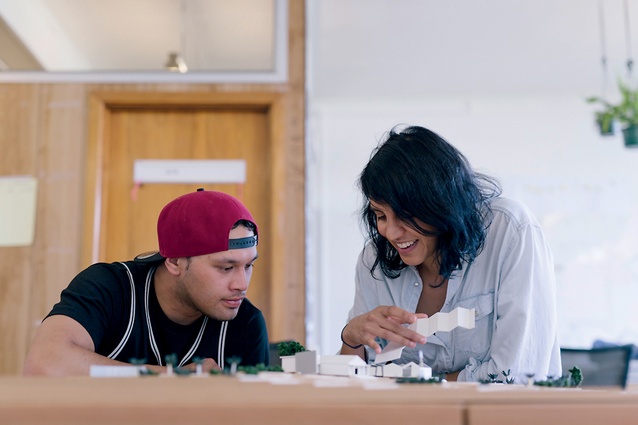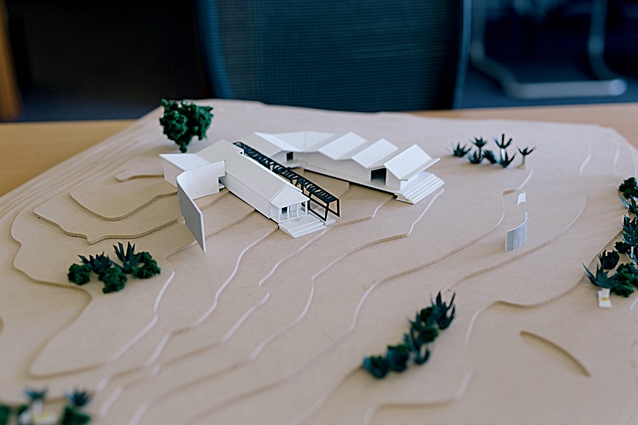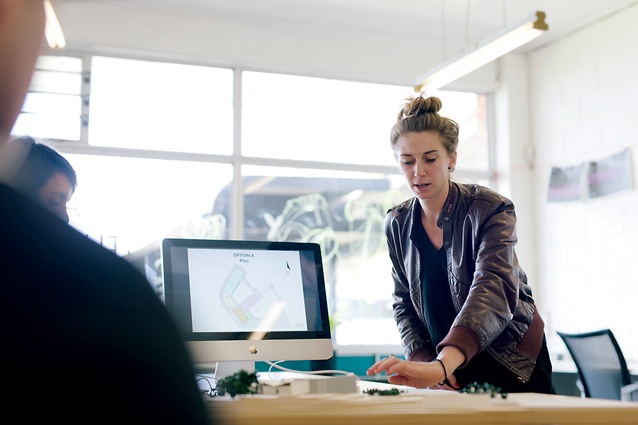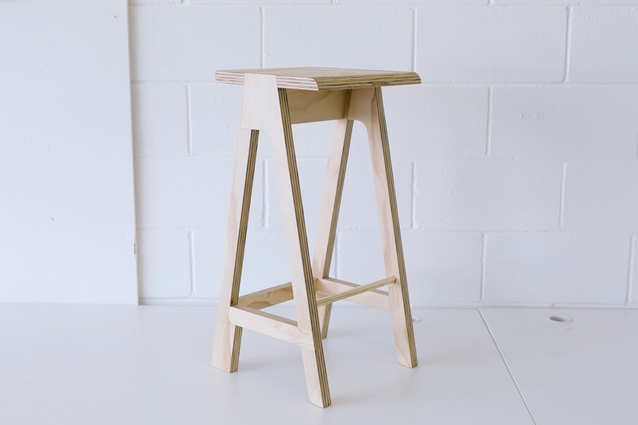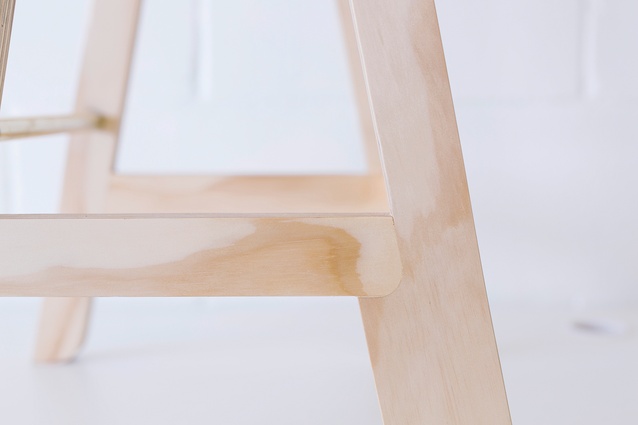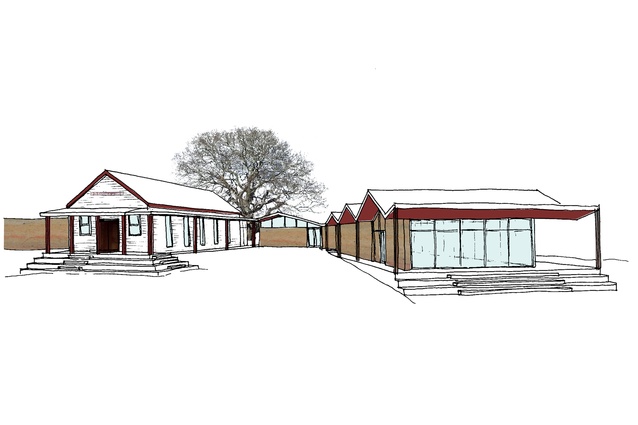Northland talent: ĀKAU
A new architectural social enterprise is weaving together youth creativity and community into innovative, real-life design projects. Justine Harvey visited the ĀKAU studio in Kaikohe.
Kaikohe in Northland, population 4,000, is known historically as the home of Hone Heke, who, most famously, disenchanted with the effects of European colonisation, chopped down the flagstaff at Kororāreka, later named Russell. Heke was also an advocate of legislative reform to improve conditions for Māori people.
Today, Heke’s home town has a similar fight on its hands to improve the conditions of its people; Kaikohe is struggling with high unemployment (14.3 per cent1), low-paid worker incomes (the median annual income is $17,900) and a low level of school-leaver qualifications.
With these issues in mind, Ana Heremaia, Felicity Brenchley and Ruby Watson set up ĀKAU, a new architectural design practice and social enterprise that is working to build communities and engage youth in the design of real projects. Its three directors believe that young people have the potential to “contribute valuable and innovative ideas in the design of real projects”, and they have created a pilot training programme to teach youth and run workshops for the local community.
The team attended Ākina’s six-month-long mentoring scheme to learn how to run the whole enterprise. The directors perform most of the detailed design and documentation for ĀKAU’s projects themselves but utilise the concepts developed with youth as the bases for the designs. The longer-term aim is to employ some of the trainee designers as interns and, once the pilot programme’s funding runs out, for design fees to be the main source of income so the company can operate sustainably as a social enterprise.
Currently, ĀKAU has five youth designers in training: Jayden Ruru, Te Teira Rakete, Honey Te Rangi, Wiremu Daniels and Rakky Alexander. The directors work with the students on a workshops programme within a collaborative studio setting, involving them in all aspects of the concept design stage and in key decisions about the direction each design should take.
Ruru explains how his aspirations have developed as a result of the programme so far: “It has helped with my confidence,” he explains. “When I see the people that used to bully me, they’re still in the same life. They haven’t really grown up and participated in the world we live in. (But) I want something for my life.”
My guess is that the positive ramifications of creating aspiration and skills in even just these five young people could be enormous. I recently visited their studio and watched them proudly present their design scheme for Miria Marae in neighbouring Waiomio: the same presentation they had given to the marae trustees a month earlier. The students were really impressive, showing a genuine understanding of the design concept; they explained its inspiration and references, the area’s history and context, and how the marae might operate better in terms of layout.
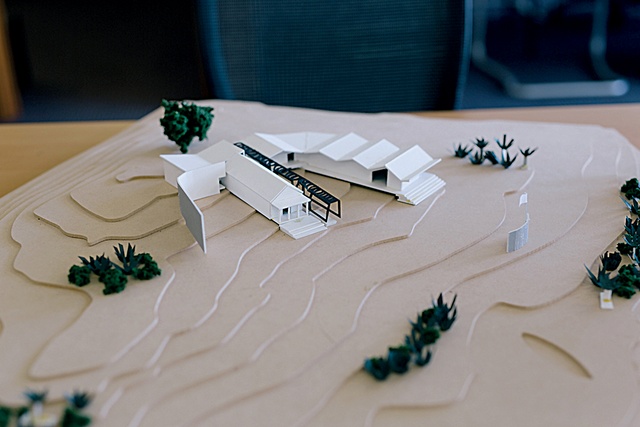
Heremaia and Watson, who had studied interior architecture at Victoria University of Wellington and architecture at The University of Auckland, respectively, met whilst working at an architectural firm (Studio E Architects) in London.
Kaikohe, typically, wouldn’t be the obvious choice for two well-travelled graduate architects seeking work back in New Zealand but, jokes Watson: “When we first moved up here, we were sitting in a pub and asked ourselves, ‘How did this happen?’” But Heremaia had whānau in the Kaikohe area and they both wanted to do something different with their careers other than “work in large practices on toilet blocks and the like”. Heremaia says, “I’d seen issues with youth up here, where no one expected anything from them and they didn’t expect anything from themselves.”
Initially, ĀKAU was going to start with making furniture with people in the corrections facility at nearby Ngawha. “We just thought: let’s make hot products, how can we make a difference and let’s get the prisoners to do it,” jests Watson. Ngawha’s prison opened only five years ago and Heremaia explains that there was “a huge hoo-ha about it because so many people from around here now go there”.
Being sent to prison doesn’t seem to be a big deal in Kaikohe, suggests Watson. “So we realised that, perhaps, we could try to nip the problem in the bud – stop some people ending up in prison by engaging with youth at that critical point in their lives where they are looking for something.”
However, the directors had a challenge recruiting young people onto the programme. “It was hard describing what architecture and design is without people actually seeing it,” explains Heremaia, “So we’ve been trying to do as much as possible on the streets and running community workshops. These guys (the youth designers) are the first believers in us, I guess – our ‘early adopters’ – and they’ve really enjoyed it. It should be easier to recruit next year.”
The ĀKAU directors are being business mentored currently by supporters from KPMG. The trio also welcomes support from the architectural profession: especially creating internships, external architect-led workshops and practice tours for the youth designers.
CASE PROJECTS:
Miria Marae
ĀKAU youth designers are designing a scheme for Miria Marae in Waiomio, about 25 minutes’ drive from Kaikohe.
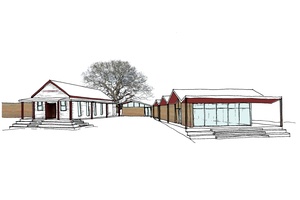
In the past, Miria Marae was a very significant marae for Ngāti Hine iwi in Northland but one of the buildings needed repair and new facilities were required. ĀKAU’s new design aims to create a vibrant marae that encourages whānau to spend time there, reconnecting with each other and their cultural heritage.
The main concept being developed is how to create a design that “guides and teaches you both physically and spiritually”. The idea of ‘being guided’ connects to the name of the marae’s wharenui, Te Rapunga, which means to ‘seek, continuously search and you will find’. To guide people on their procession through the marae, youth researched and tested ideas about the area’s connection to water, the local Kawiti caves and the history of the land and people.
Due to flooding issues on the site, firstly, the masterplan relocates the existing wharenui (built in 1883), then a new wharekai (kitchen/dining room) and wharepaku (toilet block) will be built, and the wharenui will be renovated and take pride in future stages of the development.
Paddle Stool
The ĀKAU youth designers were asked to develop conceptual ideas based on the traditional waka and, then, Jayden Ruru’s design was developed into a real product.
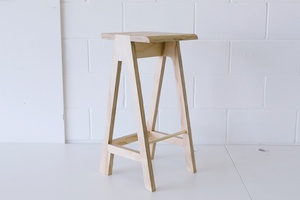
The design is inspired by the traditional hoe, or paddle, that is used to power and steer the waka, or canoe. The essence of the hoe was transformed into a conceptual form, combining curves and straight edges to create two complementary abstract hoe.
The team then had various prototypes built in Northland, settling on a 680mm-high stool made from locally sourced FSC-certified radiata pine plywood with a brass-rod feet support.
ĀKAU is taking orders for the paddle stools, priced at $350 each; they are available to purchase from akau.co.nz. All profits will help to fund ĀKAU’s youth programme and community development in Kaikohe.
1. The 2013 Census stated that the unemployment rate in Kaikohe was 14.3 per cent for people aged 15 years or older.

